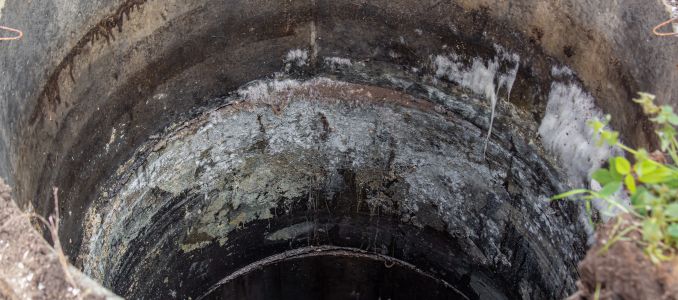
EPA Marks 20 Years of Cesspool Ban with Ongoing Closures in Hawai‘i
Since the federal ban began, more than 3,900 illegal cesspools have been closed in Hawai‘i, with $5.6 million in penalties issued to protect drinking water and the environment.
- By Stasia DeMarco
- May 12, 2025
In the 20 years since a federal ban, the EPA has assessed approximately $5.6 million in penalties and ordered the closure of over 3,900 unlawful cesspools in Hawaii
This year marks the 20th anniversary of the U.S. Environmental Protection Agency’s (EPA) federal ban under the Safe Drinking Water Act on large-capacity cesspools, which threaten sources of drinking water with pollution.
In Hawai‘i, where there is a particularly urgent need to protect water resources from contamination, the EPA has reached recent settlements with Harry & Jeanette Weinberg Foundation, Inc., Haili Moe, Inc., and Hale Nanea to close five of these unlawful large-capacity cesspools in Kauai and Hawai‘i Island.
“By working to close large-capacity cesspools in Hawai‘i, EPA continues its commitment to protect precious water resources,” said EPA Pacific Southwest Regional Administrator Josh F.W. Cook. “Each illegal cesspool closed represents increased progress toward cleaner groundwater, surface water, and beaches for Hawai‘i.”
On December 7, 1999, the EPA issued a nationwide ban on large-capacity cesspools under the Safe Drinking Water Act. Large-capacity cesspools are defined as cesspools that serve multiple residential units and non-residential cesspools with the capacity to serve more than 20 persons a day. The deadline for closure of existing large-capacity cesspools was April 5, 2005.
These illegal cesspools collect and release untreated raw sewage into the ground, where disease-causing pathogens and harmful chemicals and pharmaceuticals can contaminate groundwater, streams, and the ocean. Groundwater provides about 99 percent of Hawai‘i’s domestic water and about 50 percent of all freshwater used in the state. Untreated sanitary waste can enter groundwater and may contaminate and impact drinking water sources and shallow coastal waters.
Large-Capacity Cesspool Closures in Kauai and Hawai‘i Island
Recently, the EPA’s Pacific Southwest Region has reached settlements to close five unlawful large-capacity cesspools:
Harry & Jeanette Weinberg Foundation, Inc. (Kauai) – EPA found three large-capacity cesspools operating at a car rental location, an office supply distribution center, and a multi-business center in Lihue, HI. The properties are owned by the Harry & Jeanette Weinberg Foundation, Inc., which closed two of the cesspools and is working to close the third cesspool. The settlement also included a civil penalty of $158,000.
Haili Moe, Inc. (Kauai) – EPA identified one large-capacity cesspool operating at a helicopter tour agency in Lihue, Kauai. The property is owned by Haili Moe, Inc., which closed the cesspool on January 17, 2025. The settlement also included a civil penalty of $21,671.
Hale Nanea (Hawai‘i Island) – EPA identified one large-capacity cesspool operating at a 10-unit apartment complex in Kailua – Kona. The property is owned by Andrea and Paul Hartsough who are working to close the cesspool by May 2026. The settlement also included a civil penalty of $51,723. The proposed settlement is currently available for public comment until June 10, 2025.
Compliance Alert for Remaining Large-Capacity Cesspools
EPA has developed a compliance alert to provide more information about the ban and how to comply. EPA has primary enforcement authority for large-capacity cesspools in Hawai‘i, including the authority to issue administrative orders and assess fines for violations of the Safe Drinking Water Act’s underground injection control regulations, which cover large-capacity cesspools.
See a list of Hawai'i Cesspool Administrative Orders and information on how to self-disclose potential large-capacity cesspool violations.
Learn more about EPA’s work to close large-capacity cesspools in Hawai‘i and the Safe Drinking Water Act.
About the Author
Stasia DeMarco is the Content Editor for EPOnlne.